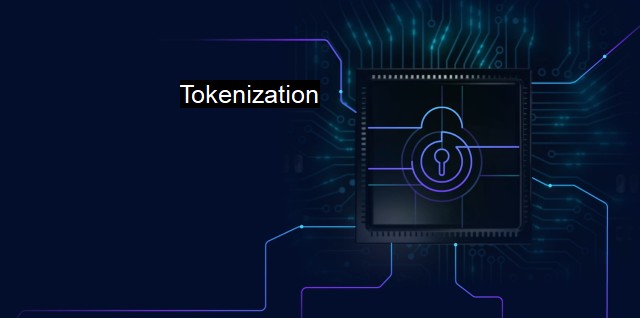What is Tokenization?
Securing Sensitive Data with Tokenization: An Evolving Cybersecurity Technique for Enhanced Data Privacy and Protection
Tokenization is a critical and intricate process utilized extensively in the field of cybersecurity and antivirus technology. It is designed to safeguard sensitive data by substitively replacing it with unique identification symbols or 'tokens' that retain the necessary information without causing any compromise to the original data.Understanding the mechanics of tokenization requires understanding its primary goal - to protect sensitive data. The software replaces the sensitive text elements like credit card numbers, social security numbers, or personal health information, which are given high unique identification symbols that are unrelated to the actual data. When dealing with potential info-security threats, this kind of replacement eliminates the need for the original data to be transmitted or stored – reducing instances for its potential compromise.
Cybersecurity delivery models incorporate tokenization as an essential tool to increase the security of data flowing across different points. As sensitive data moves across various platforms, devices, and channels, it becomes increasingly susceptible to data breaches. Here tokenization comes to rescue as it ensures that even if cybercriminals intercept the data at any point during its journey, they would only secure randomized substitutes which cannot be de-tokenized into the original dataset without access to the tokenization system or platform.
The area where tokenization is specifically delivering important solutions in cybersecurity is in Payment Card Industry Data Security Standard (PCI DSS) compliance. According to this standard, companies processing card payments must ensure certain security criteria for storing, processing, and transmitting credit card details. By replacing such valuable information with tokens, companies obfuscate the actual data, thereby adhering to PCI-DSS requirements.
While tokenization plays a huge role in securing data, it shouldn’t be confused with encryption - another popular data security technique. While both are used to secure sensitive data, they have different techniques. Encryption uses a mathematical algorithm to transpose original data into a coded message. This message gets decoded back to the original data once it reaches the intended recipient. Tokenization, on the other hand, doesn’t involve the scrambling of original data. Instead, it replaces the original sensitive data entirely. This attribute bestows tokenization with superior power while dealing with structured fields like primary account number in credit card information but is not apt for larger data pieces or files as a number of tokens would significantly exceed the volume of the original data.
The two data safeguarding techniques are not necessarily competitive but often comfortably coexist in an organization's security belt. For instance, tokenization can be critical in securing data fields held inside the database while encryption proves its effectiveness during data transit where tokens could potentially be an excessive data load issue.
The utilization of tokenization systems varies according to different applications, according to the complexity of original data or the related legal environment. Taking AVANT Secure PC as an example – it is fully protected down to the BIOS (Basic Input/Output System) with a unique "identification token," which gives an active immune response to software corruption, added/removed internal hardware, and malicious software or viruses.
The strength of tokenization as a defense system in cybersecurity lies not only in its transformative act but also in the fact that data attackers need to get access to the tokenization platform to counter-defeat it. as with any other defense line brought up by cybersecurity, tokenization is part of this continuous march on the shifting front between cyber defenders and cybercriminals. Tokenization isn't an all-encompassing solution for data security issues, but rather a useful and robust tool within a layered and holistic approach to security.

Tokenization FAQs
What is tokenization in cybersecurity?
Tokenization is the process of substituting sensitive data such as credit card numbers or personal identification numbers with non-sensitive data called tokens. It is used to secure sensitive information and prevent unauthorized access.How does tokenization work in antivirus software?
Tokenization works by replacing sensitive data with tokens that are meaningless and non-reversible. When malware attempts to access sensitive information, it only retrieves the tokens as the actual data is kept secure in a separate location.What are the benefits of tokenization in cybersecurity?
The main benefits of tokenization in cybersecurity are improved data security, reduced risk of data breaches, and compliance with data security regulations. Tokenization also reduces the amount of sensitive data stored on a system, minimizing the impact in case of a security breach.Is tokenization 100% foolproof in preventing data breaches?
Although tokenization is a highly effective method of protecting sensitive data, it is not 100% foolproof. In some instances, attackers may still find ways to obtain the actual data from which the tokens were generated. Implementing additional security measures such as multi-factor authentication and regular security audits can help strengthen the overall security posture.| | A | | | B | | | C | | | D | | | E | | | F | | | G | | | H | | | I | | | J | | | K | | | L | | | M | |
| | N | | | O | | | P | | | Q | | | R | | | S | | | T | | | U | | | V | | | W | | | X | | | Y | | | Z | |
| | 1 | | | 2 | | | 3 | | | 4 | | | 7 | | | 8 | | |||||||